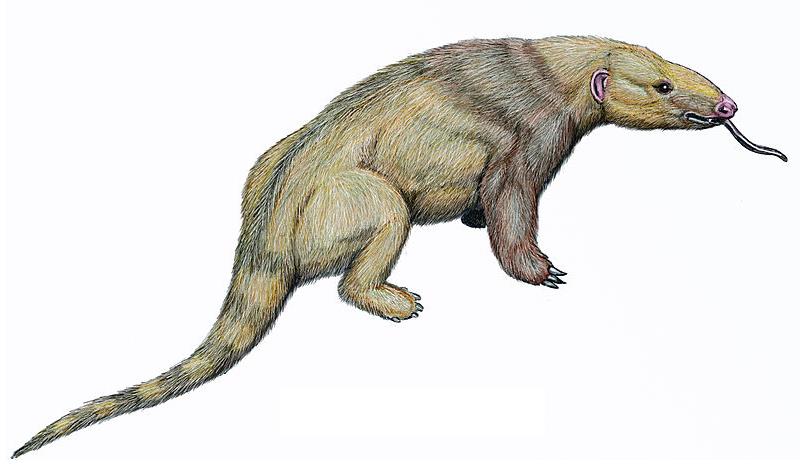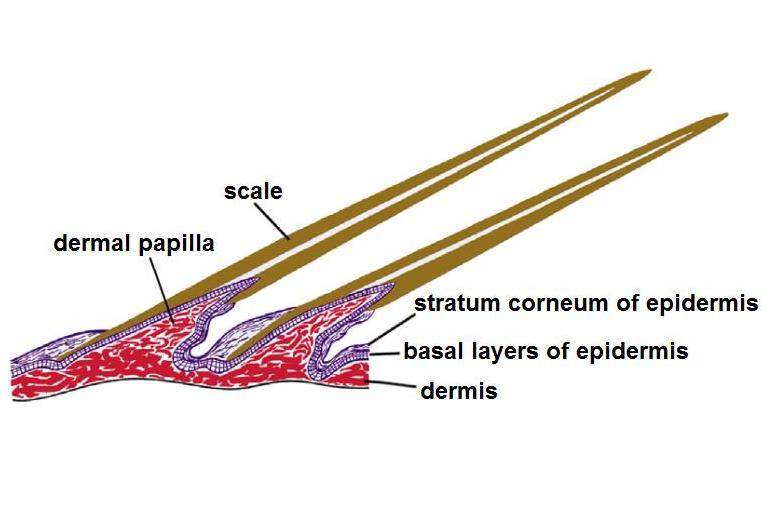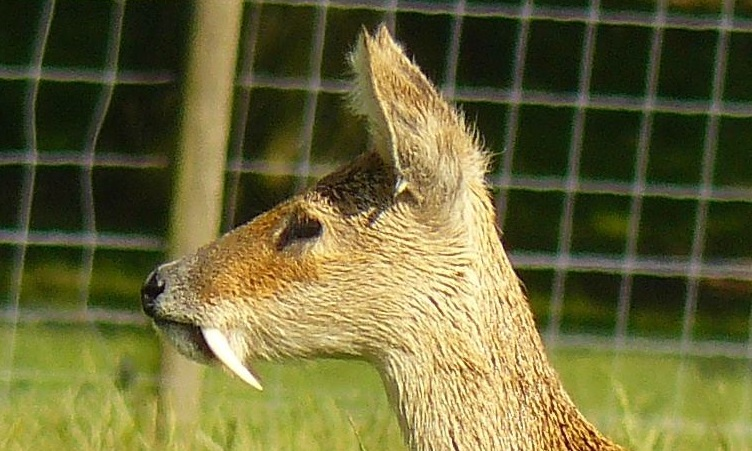|
Palaeanodonta
Palaeanodonta ("ancient toothless animals") is an extinct clade of stem-pangolins. They were insectivorous (Myrmecophagy, myrmecophagous), possibly fossorial, and lived from the middle Paleocene to early Oligocene in North America, Europe and Asia. While the taxonomic grouping of Palaeanodonta has been debated,Averianov, A. O. & Lopatin, A. V. (2014."High-level systematics of placental mammals: Current status of the problem."Biology Bulletin, 41(9), 801–816. it is widely thought that they are a sister group to pangolins. Anatomy Skull Palaeanodonts generally have low and caudally-broad skulls, with notable Lambdoid suture, lambdoid crests and inflated Tympanic part of the temporal bone, bullae and Squamosal bone, squamosals. Teeth Despite the name of the group and contrary to their pangolin relatives, palaeanodonts are known to have had teeth. Early palaeanodonts retained minimal Molar (tooth)#Tribosphenic, tribosphenic post-canines while later species had peglike or othe ... [...More Info...] [...Related Items...] OR: [Wikipedia] [Google] [Baidu] |
Epoicotheriidae
Epoicotheriidae ("strange beasts") is an extinct paraphyletic family of insectivorous placental mammals within extinct order Palaeanodonta, that lived in North America, Asia and Europe from the late Paleocene to early Oligocene. Epoicotheriids were fossorial mammals. Late Eocene/early Oligocene genera were highly specialized animals that were convergent with the Talpidae, talpids, golden moles and marsupial mole in the structure of their skulls and forelimbs, and would have had a similar lifestyle as subterranean burrowers.Kenneth D. Rose, Robert J. Emry (1983"Extraordinary fossorial adaptations in the oligocene palaeanodonts ''Epoicotherium'' and ''Xenocranium'' (Mammalia)"Journal of Morphology 175(1):33 - 56 Classification and phylogeny Taxonomy Epoicotheriidae was named by George Gaylord Simpson, Simpson in 1927. It was assigned to the Palaeanodonta by Rose (1978) and Carroll (1988). Classification * Family: †Epoicotheriidae (Paraphyly, paraphyletic family) (Simpson, 1927) * ... [...More Info...] [...Related Items...] OR: [Wikipedia] [Google] [Baidu] |
Metacheiromyidae
Metacheiromyidae ("next to ''Cheiromys''") is an extinct paraphyletic family of myrmecophagous placental mammals within extinct order Palaeanodonta, that lived in North America and Europe from the late Paleocene to middle Eocene.R. M. Schoch (1984."Revision of ''Metacheiromys'' (Wortman, 1903) and a review of the Palaeanodonta."Postilla 192:1-28 Classification and phylogeny Taxonomy * Family: †Metacheiromyidae (paraphyletic family) (Pilgrim, 1932) ** Genus: †'' Brachianodon'' (Gunnell & Gingerich, 1993) *** †''Brachianodon westorum'' (Gunnell & Gingerich, 1993) ** Genus: †'' Mylanodon'' (Secord, 2002) *** †''Mylanodon rosei'' (Secord, 2002) ** Subfamily: † Metacheiromyinae (paraphyletic subfamily) (Wortman, 1903) *** Genus: †'' Metacheiromys'' (Wortman, 1903) **** †''Metacheiromys dasypus'' (Osborn, 1904) **** †''Metacheiromys marshi'' (Wortman, 1903) *** Genus: †'' Palaeanodon'' (Matthew, 1918) **** †''Palaeanodon ignavus'' (Matthew, 1918) **** †''Palaean ... [...More Info...] [...Related Items...] OR: [Wikipedia] [Google] [Baidu] |
Escavadodon
''Escavadodon'' ("tooth from Escavada") is an extinct genus of pangolin-like myrmecophagous placental mammals of extinct monotypic family Escavadodontidae within extinct order Palaeanodonta, that lived in North America during the middle Paleocene. It contains a single species, ''Escavadodon zygus'', recovered from the Nacimiento Formation of New Mexico. Phylogenetic tree The phylogenetic relationships of genus ''Escavadodon'' is shown in the following cladogram: See also * Mammal classification * Palaeanodonta Palaeanodonta ("ancient toothless animals") is an extinct clade of stem-pangolins. They were insectivorous (Myrmecophagy, myrmecophagous), possibly fossorial, and lived from the middle Paleocene to early Oligocene in North America, Europe and Asi ... References Palaeanodonta Paleocene mammals of North America Torrejonian Fossils of the United States Paleontology in New Mexico Fossil taxa described in 2000 {{Paleo-mammal-stub ... [...More Info...] [...Related Items...] OR: [Wikipedia] [Google] [Baidu] |
Ernanodon
''Ernanodon'' ("a sprout of toothless animals") is an extinct genus of placental mammal from extinct family Ernanodontidae within extinct order Palaeanodonta, that lived from the middle to late Paleocene in China ( Nongshan Formation) and Mongolia. Characteristics of taxa and history of classification ''Ernanodon antelios'' was a relatively small animal about in length, not including the tail. When it was first discovered and examined, it was thought to be a primitive anteater. It and '' Eurotamandua'' of Eocene Germany helped to support a now-abandoned hypothesis that there was movement between the faunas of South America (the homeland of anteaters and other xenarthrans), and the faunas of Europe and Asia, by way of North America. This was further supported by the alleged European Phorusrhacid ''Strigogyps'', also of Eocene Germany. The view of ''E. antelios'' being an anteater has been discarded, and the idea that there was any extensive Paleocene faunal interchange with Sou ... [...More Info...] [...Related Items...] OR: [Wikipedia] [Google] [Baidu] |
Metacheiromys
''Metacheiromys'' ("next to ''Cheiromys''") is an extinct genus of placental mammals from extinct paraphyletic subfamily Metacheiromyinae within extinct paraphyletic family Metacheiromyidae in extinct order Palaeanodonta, that lived in North America (what is now Wyoming) from the early to middle Eocene. Etymology The generic name means "next to ''Cheiromys''" because the scientist who saw the bones mistakenly thought that the animal was a primate with hands like those of the lemurs from genus ''Daubentonia'', whose synonym is ''Cheiromys''. Characteristics of taxa ''Metacheiromys'' was a small creature, and measured around long. It had long claws and a narrow head similar in shape to that of an armadillo or an anteater (though it was actually related to the modern pangolins). The shape of its claws suggests that it probably dug through the soil in search of food, most likely small invertebrates. Unlike modern anteaters or pangolins, it had powerful canine teeth, but only a very ... [...More Info...] [...Related Items...] OR: [Wikipedia] [Google] [Baidu] |
Xenocranium
''Xenocranium'' ("strange skull") is an extinct monotypic genus of placental mammal from extinct paraphyletic subfamily Epoicotheriinae within extinct paraphyletic family Epoicotheriidae in extinct order Palaeanodonta, that lived in North America during the late Eocene. Etymology The name of genus ''Xenocranium'' comes and , respectively after its unique skull arrangement. The specific epithet is derived and , in reference to the nearby township of Hat Creek, Wyoming, U.S.A. Description ''Xenocranium pileorivale'' was a highly specialized animal that was convergent with the talpids, golden moles and marsupial mole. It possesses many traits indicative of the lifestyle of a subterranean burrower, including small eyes, an upturned snout, muscular arms with large attachment points for the triceps, teres major, and carpal and digital flexor muscles. The dental formula is . Palaeoecology The holotype of ''Xenocranium pileorivale'' was recovered from the Brule Formation, 160 ... [...More Info...] [...Related Items...] OR: [Wikipedia] [Google] [Baidu] |
Pangolin
Pangolins, sometimes known as scaly anteaters, are mammals of the order Pholidota (). The one extant family, the Manidae, has three genera: '' Manis'', '' Phataginus'', and '' Smutsia''. ''Manis'' comprises four species found in Asia, while ''Phataginus'' and ''Smutsia'' include two species each, all found in sub-Saharan Africa. These species range in size from . Several extinct pangolin species are also known. In September 2023, nine species were reported. Pangolins have large, protective keratin scales, similar in material to fingernails and toenails, covering their skin; they are the only known mammals with this feature. Depending on the species, they live in hollow trees or burrows. Pangolins are nocturnal, and their diet consists of mainly ants and termites, which they capture using their long tongues. They tend to be solitary animals, meeting only to mate and produce a litter of one to three offspring, which they raise for about two years. Pangolins superficially resemb ... [...More Info...] [...Related Items...] OR: [Wikipedia] [Google] [Baidu] |
Pangolins
Pangolins, sometimes known as scaly anteaters, are mammals of the order Pholidota (). The one extant family, the Manidae, has three genera: ''Manis'', '' Phataginus'', and '' Smutsia''. ''Manis'' comprises four species found in Asia, while ''Phataginus'' and ''Smutsia'' include two species each, all found in sub-Saharan Africa. These species range in size from . Several extinct pangolin species are also known. In September 2023, nine species were reported. Pangolins have large, protective keratin scales, similar in material to fingernails and toenails, covering their skin; they are the only known mammals with this feature. Depending on the species, they live in hollow trees or burrows. Pangolins are nocturnal, and their diet consists of mainly ants and termites, which they capture using their long tongues. They tend to be solitary animals, meeting only to mate and produce a litter of one to three offspring, which they raise for about two years. Pangolins superficially resemble ... [...More Info...] [...Related Items...] OR: [Wikipedia] [Google] [Baidu] |
Paleocene
The Paleocene ( ), or Palaeocene, is a geological epoch (geology), epoch that lasted from about 66 to 56 mya (unit), million years ago (mya). It is the first epoch of the Paleogene Period (geology), Period in the modern Cenozoic Era (geology), Era. The name is a combination of the Ancient Greek ''palaiós'' meaning "old" and the Eocene Epoch (which succeeds the Paleocene), translating to "the old part of the Eocene". The epoch is bracketed by two major events in Earth's history. The K–Pg extinction event, brought on by an asteroid impact (Chicxulub impact) and possibly volcanism (Deccan Traps), marked the beginning of the Paleocene and killed off 75% of species, most famously the non-avian dinosaurs. The end of the epoch was marked by the Paleocene–Eocene Thermal Maximum (PETM), which was a major climatic event wherein about 2,500–4,500 gigatons of carbon were released into the atmosphere and ocean systems, causing a spike in global temperatures and ocean acidification. ... [...More Info...] [...Related Items...] OR: [Wikipedia] [Google] [Baidu] |
Canine Tooth
In mammalian oral anatomy, the canine teeth, also called cuspids, dogteeth, eye teeth, vampire teeth, or fangs, are the relatively long, pointed teeth. In the context of the upper jaw, they are also known as '' fangs''. They can appear more flattened, however, causing them to resemble incisors and leading them to be called ''incisiform''. They developed and are used primarily for firmly holding food in order to tear it apart, and occasionally as weapons. They are often the largest teeth in a mammal's mouth. Individuals of most species that develop them normally have four, two in the upper jaw and two in the lower, separated within each jaw by incisors; humans and dogs are examples. In most species, canines are the anterior-most teeth in the maxillary bone. The four canines in humans are the two upper maxillary canines and the two lower mandibular canines. They are specially prominent in dogs (Canidae), hence the name. Details There are generally four canine teeth: two ... [...More Info...] [...Related Items...] OR: [Wikipedia] [Google] [Baidu] |



